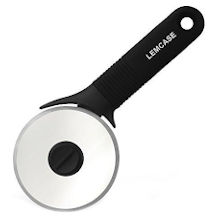Spiraliser purchasing advice: how to choose the right product
- The most important facts in a nutshell
- With a spiraliser, you can easily make uniform, long, spiral-shaped strips from vegetables or fruit.
- Spiralised vegetables are a low-calorie, tasty and visually appealing pasta alternative. But they also taste great cold – prepared on their own or as a salad.
- Electric spiraliser work at the touch of a button and are therefore very convenient to use. On the other hand, manual devices are usually more compact and somewhat cheaper.
- Different blade attachments make it possible to produce spirals of different thicknesses.
Low-calorie pasta from vegetables
Sufficient exercise alone is not enough for a healthy body; a balanced diet is just as important. High-calorie foods such as pasta taste good and are filling, but when eaten in excess they lead to weight gain and drive up blood sugar. A healthy, low-calorie alternative is vegetable noodles – made from courgette, carrots, beetroot or radish, for example. With a spiraliser, you can easily shape various vegetables into noodles – without much effort or time.
Ideal for tasty, healthy and visually appealing dishes
In terms of function, spiraliser are similar to vegetable graters. Thanks to special blade attachments, however, you do not grate the food into fine pieces, but the blades cut it into spaghetti-like spirals in a rotating motion from the outside to the inside. The vegetable noodles produced in this way, also known as zoodles or julienne, can then be cooked like pasta and enjoyed with your favourite sauce. Alternatively, you can eat them raw, for example prepared as a salad, or on their own as a healthy snack between meals.
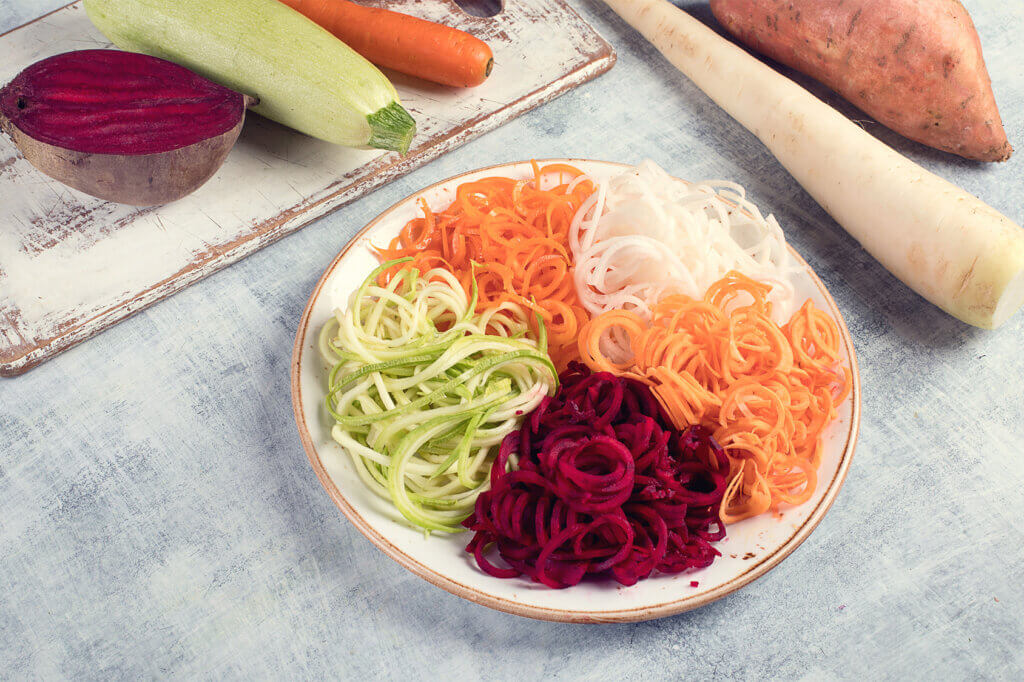
In any case, the colourful spirals are something for the eye – and as we all know, the eye also eats. You can use them to visually spice up a buffet for a party, for example. But even a simple dinner becomes an eye-catcher with shaped vegetable strips. You can also use a spiraliser to shape fruit into spaghetti, for example apples or pears. In no time at all you can conjure up a visually unusual fruit salad, which you can even use to make healthy food tasty for your children.
Economy peelers – a poor alternative
Some consumers probably wonder whether they can’t just cut their food into long, thin strips with a peeler instead of buying an additional kitchen appliance. In principle, of course, this is possible. However, cutting with a peeler takes much longer, requires more strength and does not produce such an even, visually appealing result. In addition, you have to be very careful with a peeler so as not to injure yourself.
Manual or electric – different types of spiraliser
Spiraliser can be divided into electric and manually operated models according to how they work. While electric models are more convenient to operate, manually operated ones are usually more compact and cheaper.
Manual spiraliser: For turning or cranking
Manually operated spiraliser can be divided into handy models for turning and larger ones with a crank. Both types work on the principle of a pencil sharpener.
Simple spiraliser: Handy and ideal for small quantities
The simpler twist spiral cutters look like slightly larger pencil sharpeners. They have a usually funnel-shaped attachment at one end into which you insert the food. You twist the attached fruit or vegetables by hand. Often there is a handle that you prick into the vegetable to be able to turn it better and without risk of injury. The blades are positioned to cut the food into spirals that come out the side. It is best to drop them into a bowl placed underneath or onto a board.
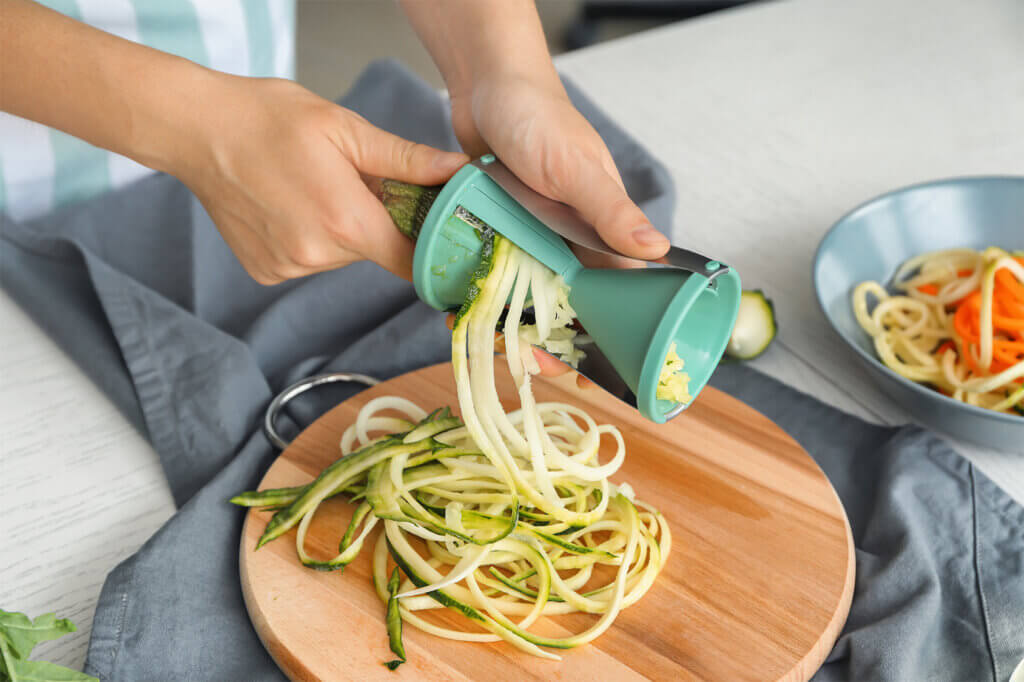
Manual models for spinning are handy and compact. Accordingly, they can be easily stored in the kitchen cupboard or in a drawer. They are particularly suitable for narrower, elongated vegetables such as courgettes, carrots or parsnips. Thicker potatoes, sweet potatoes or beetroot usually do not fit in the attachment. The compact manual spiraliser are ideal for people who want to use them to cut a small amount of vegetable noodles every now and then. For large portions, other types of spiraliser are recommended. This is because manually turning the vegetables is comparatively strenuous. In addition, you hold the device in the air and need more strength than with a spiraliser with a crank or an electric version. Well-known manufacturers of this type of spiraliser include GEFU and adoriclife.
Advantages
- Handy
- Easy to store
- Easy to use
- Inexpensive
Disadvantages
- Comparatively slow cutting
- Much force required
- Without collection container
Spiraliser with crank: Slightly larger, but more comfortable
Spiralisers with a crank are the somewhat more convenient manual version. They clamp the food between the blades and the crank. When cranked, they are pushed through the blades in such a way that the desired spirals are created. Most crank models are equipped with a collection container into which the cut strips fall.
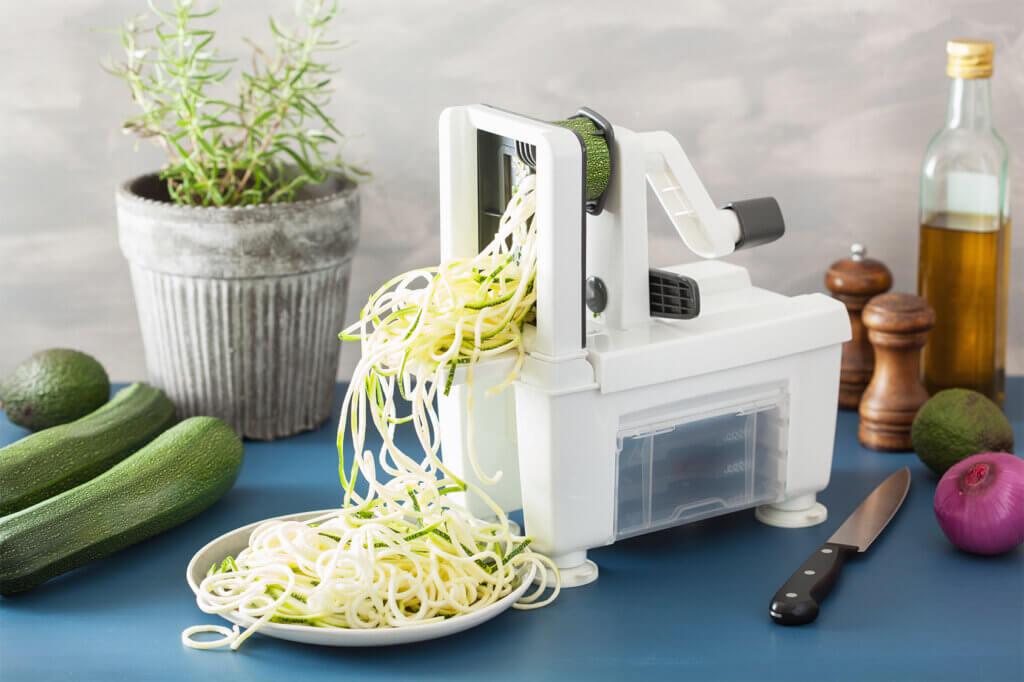
Although crank-operated spiralisers require less force than models without a crank, they are considerably larger. Since you clamp the food in most crank models instead of putting it in an attachment, you can also cut wider vegetables such as beetroot or sweet potatoes with ease. Many crank models include several blade attachments for different thickness spirals. Manually operated spiralisers with a crank are also suitable for anyone who wants to spiralise larger quantities of food. Well-known manufacturers include Lurch and Rosenstein & Söhne.
Advantages
- Comfortable cranking
- Fast cutting
- Little force required
- Mostly with collection container
Disadvantages
- Slightly higher price
- Requires some practice
- Relatively large
Electric spiraliser: spirals at the touch of a button
Electric spiralisers offer the greatest convenience. They look similar to juicers and usually have a cylindrical feed opening with a lid at the top. Underneath are the blades through which the food is pressed and twisted. Unlike manually operated devices, they require a power connection. Since there must always be a socket nearby, you have less flexibility in setting up the appliance. In addition, electric spiralisers are comparatively large. On the other hand, they work at the touch of a button, without any effort.
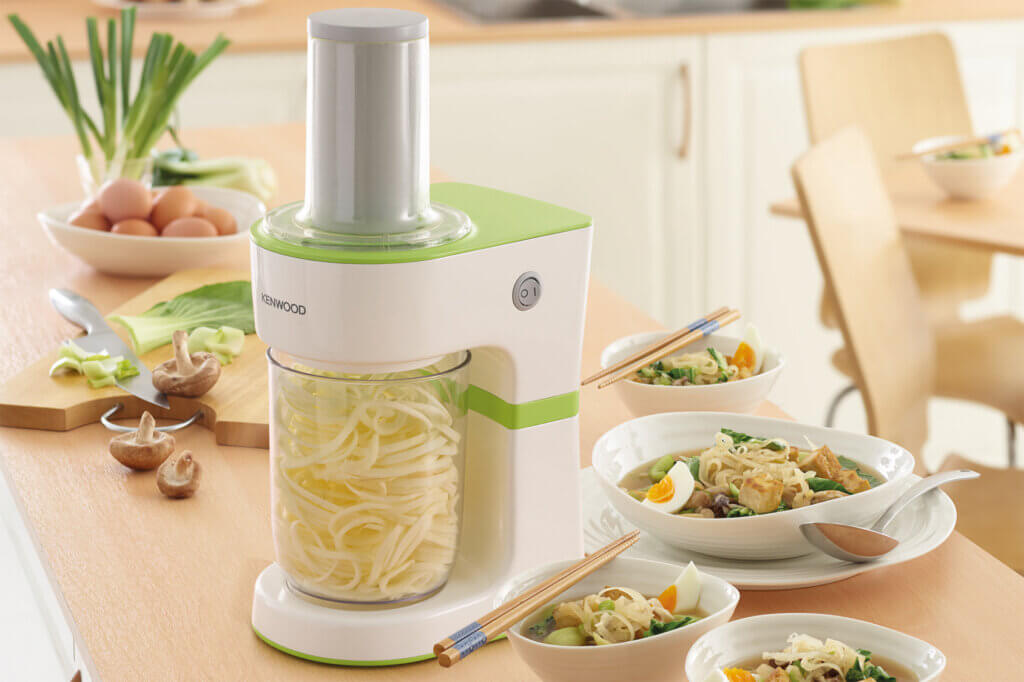
Electric spiralisers are usually equipped with a collection container and various blade attachments for different spiral shapes. Some models are combination units that you can also use, for example, to press citrus fruits or slice vegetables. Compared to manual spiralisers, the electric versions are much more expensive. They are suitable for anyone who frequently wants to spiralise large quantities of food without having to spend a lot of time or work on it. You can find them at WMF and Kenwood, among others.
Advantages
- Operation at the touch of a button
- No effort required
- Collection container included
- Various attachments
Disadvantages
- High price
- Power connection required
- Relatively large
Choosing the right spiraliser
The spiralisers on the market differ mainly in terms of ease of use, features, safety, cleaning and price. What you should look for when buying a spiral slicer is explained below:
As convenient as possible to use
Spiralising vegetables should be fun and not a strenuous task or a bad mood. A good spiraliser should be easy and comfortable to use.
Electric models offer the greatest ease of use. Ideally, the operation is intuitive, often there is only a power button. In addition, the vegetables should be easy to fill in and different blade attachments should be easy to replace. Many electric spiralisers are equipped with a practical collection container for the spirals.
Manually operated spiralisers often require a little skill and practice. Devices with a crank are usually a little more comfortable to use than simple spiralisers without a crank. In both cases, an ergonomically shaped handle is advantageous. If you have a model with a crank, you should make sure that it has non-slip feet so that the appliance cannot slip when cranking.
A convenient operation also includes uncomplicated cleaning. With electric spiralisers and crank models, the removable parts such as the collection container are often dishwasher-safe. Simple manual spiralisers can usually be rinsed under running water. It is practical if a cleaning brush is included in the scope of delivery, with which you can clean the blades safely and thoroughly.
The diameter: Which foods fit into the cutter?
Electric spiralisers and manual devices without a crank typically have an insert into which you fill or insert the fruit or vegetables. The smaller the insert, the narrower the food must be. For example, you can cut carrots, parsnips or courgettes well with some devices, while thicker potatoes or beetroot do not fit into the insert. You are less likely to have this problem with spiralisers with a crank, as you usually clamp the vegetables here.
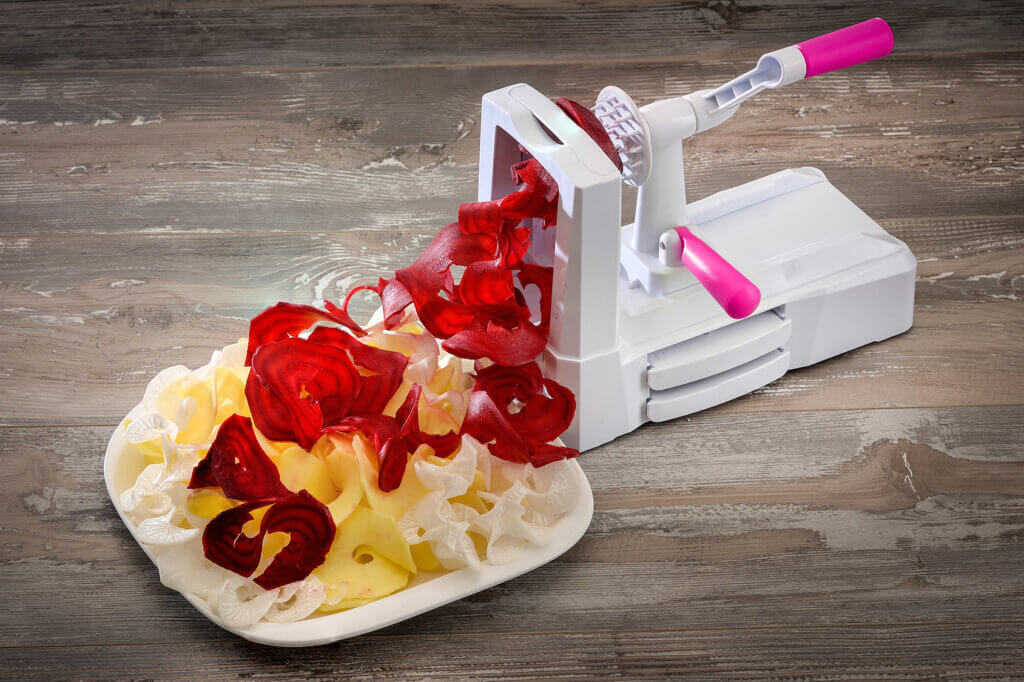
What doesn’t fit can be made to fit
You can, of course, cut up fruit or vegetables that are too large to fit into the spiraliser. Sometimes, however, the result is worse – for example, if corners are created when cutting, the spirals will be shorter and more uneven.
Pretty spirals or just snippets – the cutting result
Ideally, a spiraliser makes nice, even and long spirals out of the desired vegetables or fruit. To ensure that it cuts both hard and soft foods effortlessly, the appliance needs high-quality, sharp blades. Stainless steel blades are well suited and frequently used.
Electric spiralisers produce particularly even spirals. Hand-operated models often require some skill to produce more than just irregular vegetable shreds. Since you cannot test the products before buying them, you cannot judge the cutting result beforehand. At best, you can orientate yourself on product tests and customer reviews or have to rely on the manufacturer’s specifications.
How much remainder is left over?
Ideally, the spiraliser processes the entire product into spirals so that nothing is left over. However, only very few models succeed in this. Most manually operated spiralisers leave at least a narrow stalk and a thin slice or a small vegetable cone uncut. Electric models often leave only a very small remnant.
Nothing has to go to waste
The less leftovers the spiraliser leaves, the more spirals you get from a piece of vegetable or fruit. However, it is not a bad thing if a little more is left over when you cut. You can cut the leftovers into small cubes, freeze them and use them in the next vegetable soup.
What safety features does a spiraliser need?
For uniform spirals, you need sharp knives, but these carry a high risk of injury. A good spiraliser is therefore not only convenient, but above all safe to use. Stand-alone appliances should always be equipped with non-slip feet that ensure a stable, safe stand during operation.
For compact manual spiralisers without a crank, make sure that a finger guard with a safety handle is included. This allows you to push and turn the food through the blades without endangering your fingers – a great advantage especially with small leftovers.
Electric spiralisers generally offer a very high level of safety thanks to the internal cutting unit. Ideally, they are also equipped with a child safety lock. This ensures that the appliance can only be switched on when a blade insert is correctly inserted and the attachment is filled.
Different attachments for different width spirals
While many simple spiralisers without a crank only have one blade attachment for one spiral width, other models are often equipped with three or more attachments. The electric model from Kenwood, for example, comes with one blade attachment each for spaghetti, tagliatelle and pappardelle. The slightly higher-priced WMF Kult Pro includes a citrus press insert in addition to one attachment each for spaghetti, linguine and tagliatelle. If you like to make vegetable noodles of different widths, an appliance with several attachments is ideal.
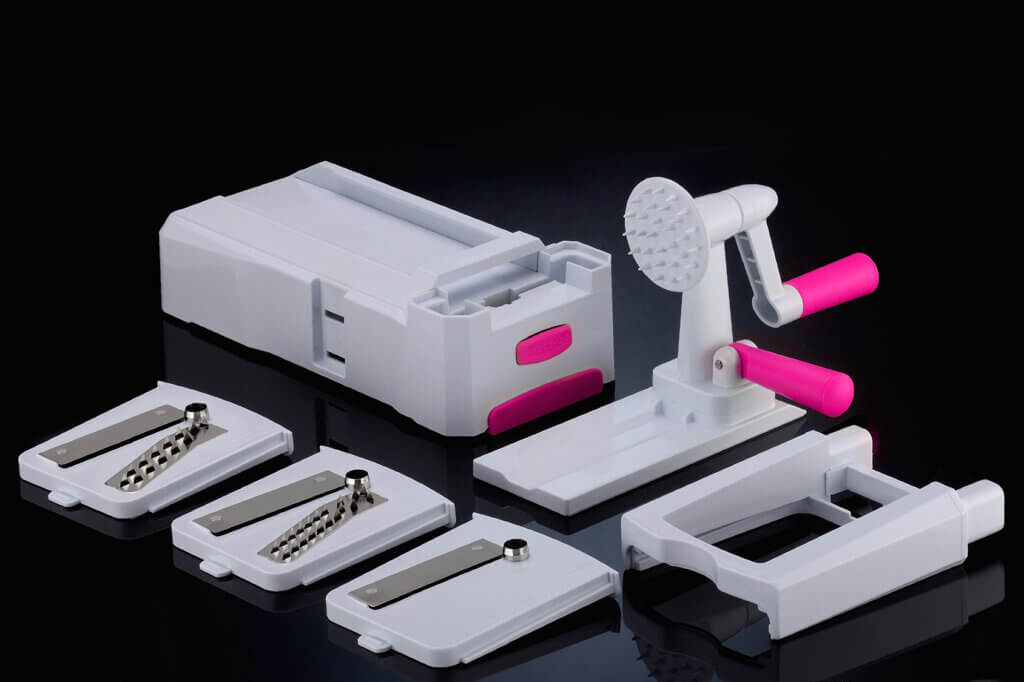
Not available at all, small or large – the drip tray
A collection container is not absolutely necessary, but it is very practical. Simple spiralisers without a crank do not have one, crank machines often come with one and electric models come with one as standard. If you opt for a spiraliser with a collection container, you should consider its size. Depending on the model, it can hold 0.5 to 1.5 litres. If you usually prepare smaller portions, a smaller container will suffice. If you regularly want to cut larger quantities of fruit and vegetables into spirals, you should choose a model with a larger container so that you do not have to empty it too often.
How much does a spiraliser cost?
The price of spiralisers depends mainly on their type. Small manual devices are already available for less than 10 euros and rarely cost more than 20 euros. For a hand-operated spiraliser with a crank, you need to budget around 15 to 50 euros. Electric models cost the most, but they also offer the greatest convenience. Prices for an electric spiraliser range from 30 to 100 euros.

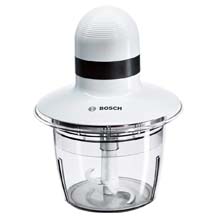
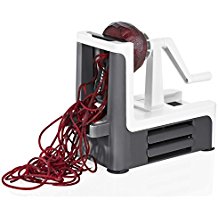
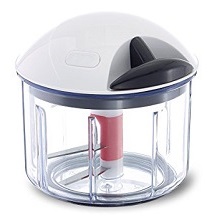
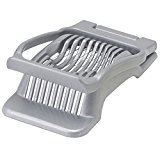

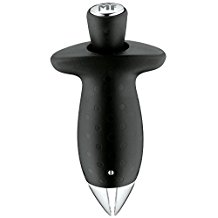
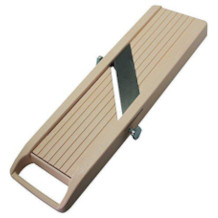
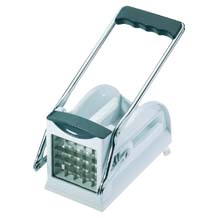
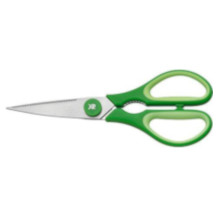
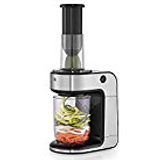
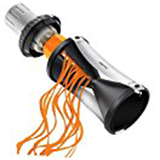
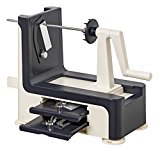
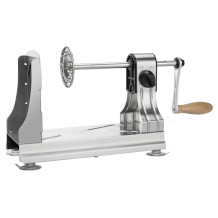
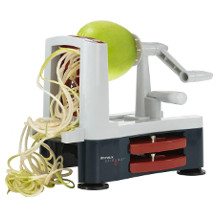
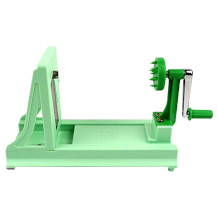

 2,470 reviews
2,470 reviews
